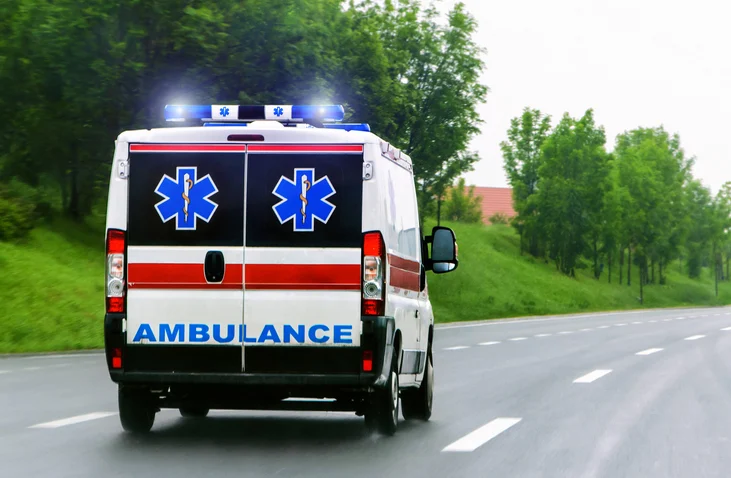When you think of Gili Meno, pristine beaches, crystal-clear waters, and a peaceful atmosphere come to mind. Known as the quietest of the three Gili Islands off the coast of Lombok, Indonesia, Gili Meno is a true escape from the noise of modern life. But what happens when paradise meets emergency?
In a place with no cars, no motorbikes, and no hospital, the existence of an ambulance in Gili Meno might sound almost ironic. However, it’s not only real—it’s an essential lifeline for both locals and tourists.
In this article, we dive into how the ambulance Gili Meno service works, why it matters, and how it’s reshaping healthcare access in one of Indonesia’s most remote and beautiful locations.
The Unique Challenges of Healthcare on Gili Meno
With a population of fewer than 500 people, Gili Meno thrives on simplicity. There are no asphalt roads, only sandy paths used by bicycles and horse-drawn carts called cidomo. There are no hospitals—only a small health post (puskesmas pembantu) with limited staff and supplies.
This serene isolation, while ideal for vacationers, creates major obstacles in medical emergencies. Time-sensitive cases like strokes, heart attacks, or severe injuries can’t wait. In the past, patients had to rely on improvised transportation to reach the mainland or Gili Trawangan—sometimes taking hours.
Enter: the ambulance Gili Meno initiative.
How the Ambulance Service Operates
Unlike traditional ambulances, the ambulance in Gili Meno is uniquely adapted to its environment. Since there are no motor vehicles allowed on the island, emergency medical teams often use a combination of:
- Stretcher trolleys or modified carts for patient transport
- Medical boats or fast-response water ambulances to ferry patients to Gili Trawangan or Lombok
- Coordinated communication with mainland hospitals and clinics to prepare for patient arrival
When an emergency is reported, first responders on Gili Meno assess the situation, stabilize the patient, and begin immediate transport using the available means. The most common method includes moving the patient to the harbor, where a boat ambulance or fast boat awaits.
Life-Saving Moments: Real Stories from the Island
One tourist shared her experience of a severe allergic reaction while snorkeling. “My throat started to close up, and I was terrified. I thought I wouldn’t make it,” she recalled. Within minutes of a distress call, the ambulance Gili Meno team was by her side. Thanks to their swift coordination with the mainland hospital, she received life-saving treatment just in time.
Locals, too, benefit greatly. Expecting mothers, injured fishermen, and elderly islanders who suffer strokes or chronic illness are no longer cut off from medical help.
Who Runs the Ambulance Gili Meno Service?
The ambulance service in Gili Meno is usually operated in coordination with:
- Local health authorities (puskesmas)
- Volunteer health workers
- NGOs focusing on remote island healthcare
- Occasionally supported by tourism-based foundations or donors
As awareness of the service grows, more organizations and individuals are stepping up to fund better equipment, training, and boat maintenance.
Why This Service Matters More Than Ever
With tourism bouncing back post-pandemic, Gili Meno is seeing an influx of visitors again. While the island may seem tranquil, emergencies don’t wait. Heatstroke, diving accidents, dehydration, and food allergies are more common than people realize.
The presence of an efficient ambulance Gili Meno system not only saves lives but also boosts confidence among tourists and ensures a safer experience for everyone.
What Can Be Improved?
While the service is operational, several challenges remain:
- Limited medical equipment on the island
- Inconsistent electricity and internet connection for telemedicine
- Dependence on sea conditions, which can delay transport
- Lack of trained personnel, especially during tourist peak seasons
With more public awareness and support, these gaps can be bridged. Donations, medical volunteering, and strategic partnerships can turn the current system into a model for other remote island communities in Indonesia and beyond.
How You Can Help
If you’re inspired by the story of the ambulance Gili Meno, here’s how you can support:
- Spread the word – Share information about the service to raise awareness.
- Donate – Many initiatives accept donations for fuel, medical supplies, and training.
- Volunteer – Medical professionals and first aid trainers are always needed.
- Travel responsibly – When visiting, learn local emergency numbers and support health-conscious tourism operators.
Paradise With a Pulse
Gili Meno may be remote, but it’s not without hope. The ambulance Gili Meno initiative is proof that even the most isolated communities can access emergency care with the right system in place.
Whether you’re a traveler planning your next tropical escape or someone passionate about healthcare access, remember: even paradise needs an ambulance.
By supporting efforts like this, we ensure that the beauty of Gili Meno doesn’t come at the cost of basic human care.
